Europe lags in transfer of freight onto rail
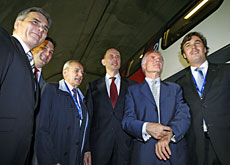
The new Lötschberg rail tunnel under the Alps, which was officially opened on Friday, should have a huge impact on the transfer of freight from road to rail.
But while transalpine links are an integral part of European Union transport planning, the transfer of goods to the railways is meeting with greater resistance among EU states than in Switzerland.
The new 34.6km tunnel, which is set to be fully operational in December, is the longest in Switzerland and the third-longest in the world. The Lötschberg, together with the new Gotthard tunnel due to open in 2017, forms part the Swiss New Railway Links through the Alps (NRLA) project.
The NRLA has been long been part of EU rail plans. Under the bilateral agreements with the EU, Switzerland committed to build the NRLA links, while on its side the EU promised to improve rail connections to the north and to the south.
EU Transport Commissioner Jacques Barrot is a huge fan of the Swiss project.
“The Lötschberg is a magnificent example for all those who think that sustainable mobility is just an empty slogan,” said Barrot at Friday’s official opening.
“Tomorrow, thanks to the Lötschberg tunnel, the competitiveness of the Rotterdam-Genova route will receive a boost.”
Four alpine tunnels
In 2004 the EU named the NRLA a priority project, along with 30 other European transport routes.
In the future, the Lötschberg and the future Gotthard tunnels will compete with other new transalpine rail links such as the Brenner, between Austria and Italy, and the Mont-Cenis, between France and Italy.
But aren’t four new tunnels under the Alps too much?
“No,” replies Jacques Barrot’s transport spokesman, “In fact the tunnels connect different transport corridors which will scarcely compete with each other. And as for the huge ports of Rotterdam and Antwerp, the obvious route for freight travelling to Italy is via the Swiss tunnels.”
Limited competence
One problem of the Rotterdam-Genova rail route is that Brussels only has a limited controlling influence. On the one hand, EU funding is too modest.
“And on the other, neither the EU nor the European Commission are able to take direct decisions concerning this or other axes,” explains the spokesman.
In other words, Germany and Italy are the states directly responsible for the construction of the route. While the Basel-Karlsruhe four-track section has already been agreed upon, connections between the NRLA and southern Europe are still uncertain.
The main influence of EU policy on the Rotterdam-Genova rail link has been to quickly liberalise rail freight traffic. Competition has driven down prices and improved offers.
But an in-depth study in 2004 by the Community of European Railway and Infrastructure Companies (CER) gave a rather mixed picture. The volume of goods transported on the Rotterdam-Genova rail link has increased by five to ten per cent but the line only represented one-fifth of the market share for freight.
In Switzerland, the transfer from road to rail is also slower than expected. On the Swiss section of the Rotterdam-Genova rail route, the percentage of freight transported by rail increased from 63% in 2003 to 66% in 2006.
This is explained in particular by Switzerland’s heavy-duty vehicle road taxes, which are much higher than in the EU.
But CER spokesman, Elke Schänzler claims the EU should follow the Swiss example:
“Until now, the community has placed more importance on the free movement of goods than on taxing heavy-duty vehicles for environmental reasons.”
The climate debate should change things. If the EU really wants to meet its ambitious climate objectives, much greater efforts can be expected to transfer freight onto Europe’s more environmentally friendly trains.
swissinfo, Simon Thönen in Brussels

More
New Rail Links through the Alps
The Lötschberg was originally envisaged as a two-tunnel system. But budget cuts have meant that in parts the tunnel will consist of just one tunnel, so that trains going in opposite directions will have to share the track.
The first goods trains will be able to use the tunnel from June 16, 2007. A full passenger service will start from December 9, 2007.
The Lötschberg is expected to cost SFr4.3 billion ($3.59 billion), up from the initial estimate of SFr3.2 as a result of “security improvements”, according to AlpTransit.
The overall approved budget for the whole NRLA project (Lötschberg, Gotthard and Ceneri tunnels) of SFr12.6 billion could well rise to SFr24 billion.

In compliance with the JTI standards
More: SWI swissinfo.ch certified by the Journalism Trust Initiative
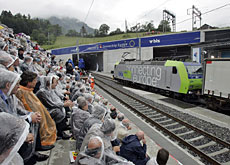
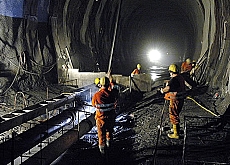
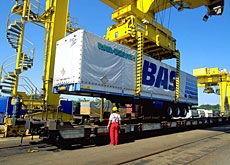
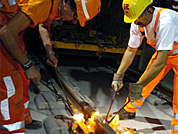
You can find an overview of ongoing debates with our journalists here. Please join us!
If you want to start a conversation about a topic raised in this article or want to report factual errors, email us at english@swissinfo.ch.